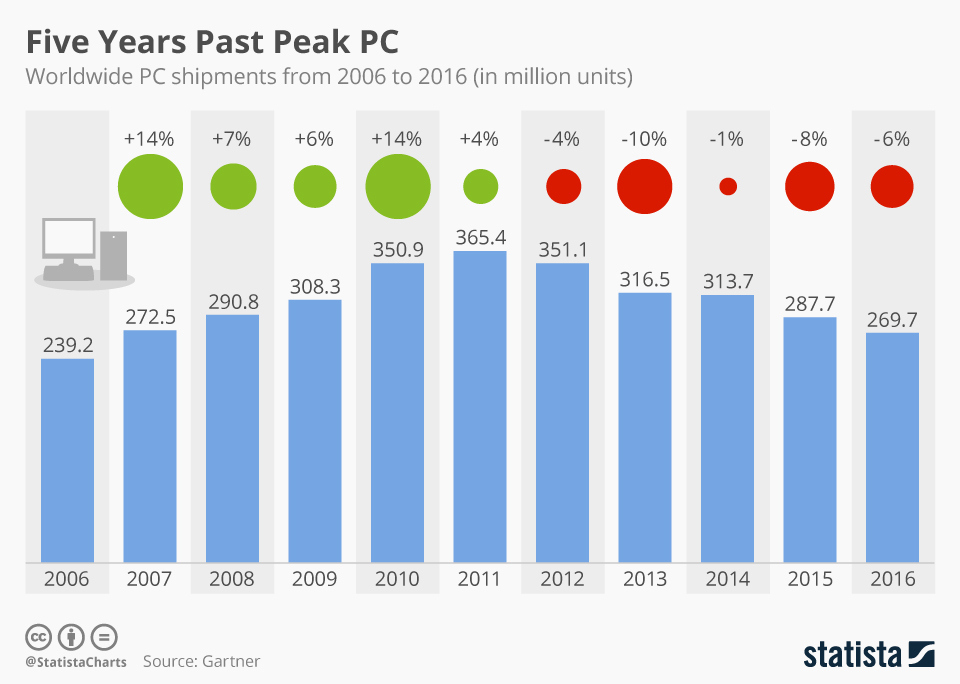Simple Tweaks for Peak PC Graphics Performance

Change the settings for your illustrations board and show to further develop picture quality.
With regards to your PC, looks certainly matter. Minuscule text, hazy pictures, and flashing screens aren’t simply irritating, they can prompt eye fatigue, lost efficiency, and a bill from the glazier for supplanting the window you remove your screen through from disappointment. In any case, you don’t need to fire your presentation: A couple of straightforward acclimations to your designs card and different Windows settings can guarantee top visual execution.
Your PC’s illustrations card is constrained by its Windows driver, so get the most recent driver discharge for your board. To see what rendition you have, right-click the work area and pick Properties to open the Showcase Properties exchange box, then click Settings, High level, Connector (in Windows XP, likewise select Properties, Driver).
Visit your illustrations card merchant’s Site to download the latest variant of the driver, however don’t introduce beta drivers. These are works in progress that might bring more hardship than they’re worth.
Sight-Saving Settings
The following are a couple of settings that ought to be accessible for all illustrations drivers.
Goal: This is the quantity of spots – or pixels (another way to say “picture components”)- – showed on your screen. The higher the goal, the more dabs per inch, and the more keen the showed picture (assuming that your screen upholds the higher goal). High goals increment the handling requests on your designs board and PC.
The illustrations cards in many PCs made in the last three or four years support goals of no less than 1024 by 768- – meaning the screen picture is made out of a symmetrical cluster 1024 pixels across and 768 pixels tall- – and some help screen goals as high as 1600 by 1200. Be that as it may, numerous more established frameworks, as well as some fresher spending plan frameworks, have a top goal of just 800 by 600.
To change screen goal, open Showcase Properties and snap Settings. Slide the ‘Screen region’ or ‘Screen goal’ bar to a higher (More) or lower (Less) goal. However higher goals further develop picture quality, they likewise recoil symbols, text, and other on-screen objects. Analysis to find the fixing that is for you. For a great many people, 1024 by 768 is the most elevated goal they can peruse effectively on a 17-inch CRT screen.
Variety profundity: This setting is the quantity of varieties that your illustrations card upholds. The more tones accessible for use, the more practical the picture, yet once more, the more varieties on your screen, the more noteworthy the handling requests on your framework.
Your illustrations card’s variety profundity settings are recorded in Show Properties under the Settings tab on the Tones drop-down menu (‘Variety quality’ in Windows XP). Each is named for the quantity of pieces it doles out to every pixel: Genuine nature (additionally called 24-digit tone) makes 16,777,216 varieties accessible, while High Tone (16 pieces) upholds 65,536 tones. At lower than 16-cycle tone, your pictures might endure. Numerous drivers presently not offer 8-cycle (256 tones) or 15-bit (32,536 varieties) settings.
New laptops frequently support 32-cycle tone, which offers a similar 16 million or more tones as Genuine nature. The additional 8 pieces control picture darkness. This is valuable in quick 3D games yet of little assistance in many business applications.
Revive rate: Communicated in hertz, or cycles each second, this advises how frequently the phosphors that gleam to make a picture on a CRT screen are recharged – that is, the times each second that the screen’s picture is redrawn. An invigorate rate that is too low can cause irritating screen glint. Regardless of whether you see the glint, slow invigorates can cause eye fatigue and migraines.
The standard way of thinking says your invigorate rate ought to be something like 72 Hz. A few specialists say the base rate is 80 Hz. Attempt different revive rates until you track down the one that works for you. Note that if your revive rate is excessively high, you could lose picture haziness. In any case, not many of us can observe rates higher than 85 Hz.
To change your screen’s revive rate in Windows XP, open Presentation Properties and snap Settings, High level, Connector, Rundown All Modes. Pick a blend of invigorate rate, screen goal, and variety profundity from the rundown of upheld values.
To change your revive rate in different forms of Windows, open Showcase Properties and afterward click Settings, High level, Connector. Select a choice from the ‘Revive rate’ drop-down menu. In the event that you see no choices there, in any case, your designs board and screen don’t uphold different revive rates.
Indeed, even all things considered, you could possibly build your showcase’s invigorate rate by diminishing your screen goal or your variety profundity. Every one of the three specs seek illustrations handling limit, so assuming your designs framework is running at its most extreme, take a stab at expanding one setting and bringing down another. For instance, lessening variety profundity from 32-digit to 16-cycle – not a problem on the off chance that you never take a gander at photographs – may let loose sufficient handling ability to allow you to knock your revive rate from an irritating 60 Hz to an eye-satisfying 72 Hz. Or then again you might have the option to increment goal from 800 by 600 to 1024 by 768. There’s no assurance, however these stunts could work.
Windows naturally sets your screen revive rate to a safe however sluggish 60 Hz when it can’t identify your screen. To affirm that Windows XP accurately perceives your screen, open Presentation Properties and snap Settings, High level, Screen. On the off chance that your screen isn’t recorded under ‘Screen type’, download and introduce the gadget’s driver from the producer’s Site.
In different adaptations of Windows, confirm that Fitting and Play is empowered. Ensure your screen is recorded under ‘Show’ on the Settings tab in Show Properties, and afterward click Progressed, Screen. Confirm that Naturally recognize Fitting and Play screens is checked. On the off chance that it isn’t, select it and afterward reset your invigorate rate to a level that is higher than Windows’ default 60 Hz.
DirectX: This Windows part controls sight and sound capabilities. To check your ongoing DirectX form, click Start, Run, type dxdiag, and click alright. Pick the Framework tab and look under Framework Data on the lower part of the screen. DirectX 9 is the most recent adaptation; on the off chance that you don’t have it, download it from Microsoft.
Contact Those Dials!
You can further develop the picture nature of your screen through its underlying controls. The choices differ by show producer and model, yet you ought to track down splendor and different controls on most screens.
Change brilliance and differentiation: Utilize this dark scale picture on your screen. Be certain you can consider to be large numbers of the picture’s 17 shades as could really be expected; the a few most obscure might be hard to see in a brilliant room.
Focus and adjust: Not many screens come directly from the production line with ideal screen math. Utilize your’s screen-situation controls to focus your showed picture, keep its edges straight, and limit unfilled screen space.
To keep away from eye fatigue and other actual issues, put the highest point of the screen at eye level and at a careful distance from your head (your best position might shift). Situate your screen to stay away from glare from lights and windows. On the off chance that that is unrealistic, get a glare channel, for example, Kensington’s $34 GlareMaster.
Clean it: Delicately wipe your screen with a delicate, daintily soaked material. Except if the screen is truly foul, try not to clean arrangements, which can harm fragile screen coatings. Clean the residue from the cooling vents in the screen’s case; overheating is your showcase’s deadly foe.
Illustrations Emergency
On the off chance that your screen goes clear, the issue is reasonable because of a separated screen link, a turned off power rope, or a too-low splendor setting. Screens do pass on, notwithstanding. Assuming you smell something consuming or hear popping sounds, your screen could be fizzling – switch it off right away. Screens have been known to combust unexpectedly.
Debased illustrations drivers cause a wide range of PC issues. To check for a harmed illustrations driver, introduce the plain-vanilla VGA driver that accompanies Windows. In the event that your difficulties vanish, reinstall a perfect duplicate of the screen’s unique driver, or a refreshed form.
A few designs sheets don’t work or play well with other equipment gadgets. Windows permits you to impair illustrations speed increase capabilities for similarity. Open Presentation Properties and snap Settings, Progressed, Investigating in Windows XP and 2000, or Settings, High level, Execution in Windows 98 and Me. Move the slider under ‘Equipment speed increase’ to one side to handicap your illustrations speed increase.
A shaking or sparkling picture on your screen might be because of neighboring attractive fields. Keep clocks and different machines that utilization electric engines, and those that utilization a great deal of power (like microwaves), a long way from your screen. Electrical cables behind walls can cause obstruction, so have a go at moving the showcase away from neighboring walls.
In the event that your screen picture is washed in blue, red, or green, check for a free link interfacing your designs board to your screen. Search for bowed pins inside the link connector; you can frequently fix them with long nose pincers. If on-screen objects have a rainbow projected, a few screens have union controls that you can use to tune the picture.
Living in a Level World
Scratch pad shows are tweaked in the production line to work with the framework’s other equipment; your work area’s level board probably isn’t. What’s more, tuning a LCD isn’t equivalent to tuning a CRT screen. On the off chance that both your LCD and designs board support Computerized Visual Point of interaction associations, ensure they’re utilizing them. Merchants don’t necessarily in all cases transport a DVI link with cards that produce both simple and computerized signals, so you’ll need to supplant the simple link. Assuming your showcase upholds DVI yet your illustrations card doesn’t, redesign your card.
Make sure your LCD is set to its native resolution. Many flat-panel displays don’t look good at other resolutions. Unfortunately, some 15-inch LCDs have a native resolution of 1024 by 768 dpi, which makes text minuscule. The solution is to open Display Properties, click Appearance, and change the setting on the ‘Font size’ drop-down menu to increase the size of your text. (Most browsers include their own font-size settings.)
In Windows XP, open Display Properties, click Appearance, Effects, and check Use the following method to smooth screen fonts. Select ClearType to see a big improvement in the appearance of many of your fonts.





